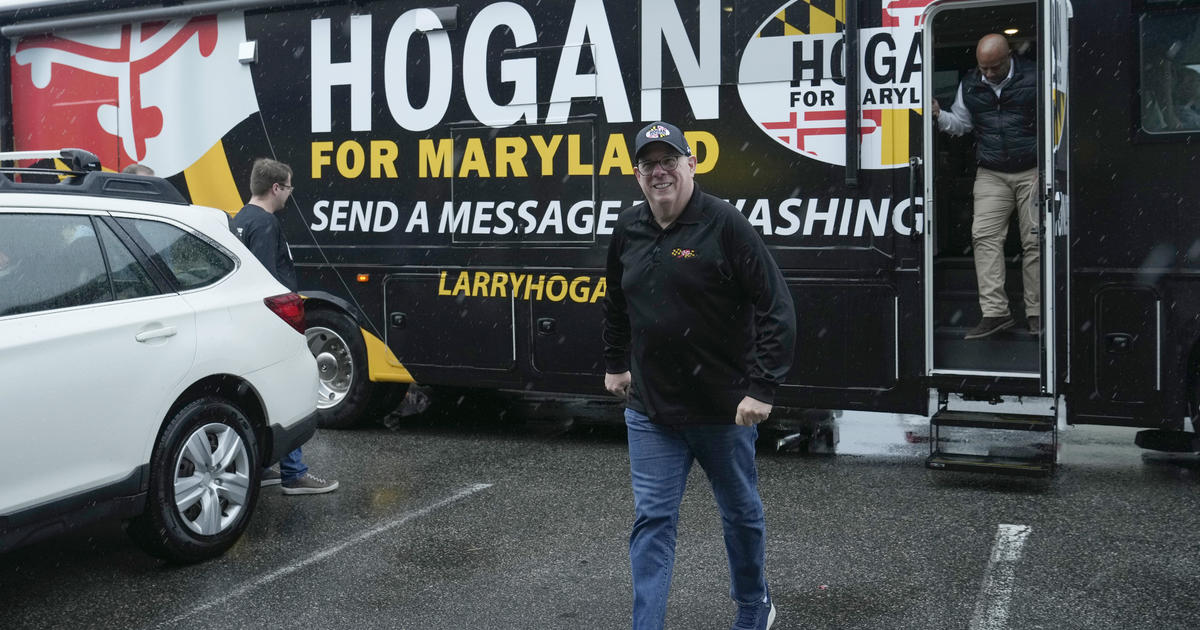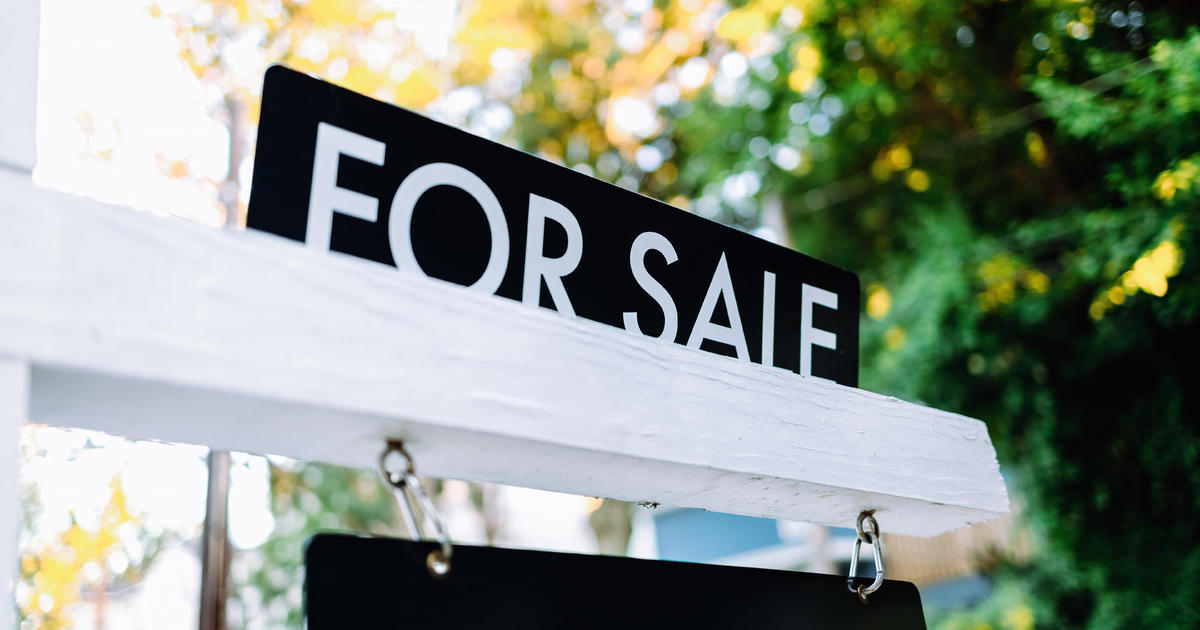Md.'s Heroin And Opioid Crisis Reaches All-Time High
ANNAPOLIS, Md. (AP) — Barbara Allen signs her emails with the names of her family members she has lost to addiction.
Jim's mom, Bill's sister, Amanda's aunt.
Her son, Jim, died from a heroin and alcohol overdose in 2003 after battling substance abuse disorder for 22 years.
"What I found really annoyed me and made me angry was there was so little support, and in fact people didn't have to continue to to die," said Barbara, who lives in Howard County, Maryland.
In Maryland, heroin-related deaths tripled from 2011 to 2015, rising from 247 to 748, according to the Maryland Department of Health and Mental Hygiene.
The death rate from drug overdoses in the state is the fifth-worst in the country, and it's only likely to get worse, experts say.
The rise of heroin and opioids
In the early 2000s, the popularity of heroin and opioids as illegal narcotics soared in Maryland around the same time as overdose deaths due to drugs or alcohol began to increase, according to the Centers for Disease Control and Prevention.
"If you go back to 2006 and 2007, it was most notable here where the conversation internally to the (sheriff's department) really began because of overdose deaths from opiate painkillers," said Tim Cameron, the sheriff in St. Mary's County and a member of the Governor's Heroin and Opioid Emergency Task Force in 2015.
When the epidemic first began, most of the people dying from overdoses were young, white and in the middle and upper classes, but that trend soon gave way to include almost all demographic and socioeconomic groups, Cameron said.
"It pretty much affects everyone," said Sgt. Johnny Murray with the Hagerstown Police Department. "It's just (a result of) the pill epidemic, when that was uncontrolled and people were being able to 'doctor shop' and go to 4 or 5 different doctors and get these powerful narcotics."
Often after people get addicted to prescription opioid painkillers, they turn to heroin, which is cheaper and provides a similar high, said Murray.
In Washington County, Maryland, Delegate Brett Wilson, R-Hagerstown, who also served on the Governor's Heroin and Opioid Emergency Task Force, said people in almost all demographic groups are dying from heroin and opioid overdoses.
"With our patients, they were often completely unaware that the heroin or sometimes even just the pills that they were using had fentanyl in it," said Dr. Yngvild Olsen, medical director of an outpatient program in Baltimore.
Fentanyl, a synthetic opioid 25 to 40 times more potent than heroin, has recently seen a surge in popularity because it takes less time to create and can easily be blended into heroin, said Olsen, the president of the Maryland Association for Treatment of Opioid Dependence.
Because of its potency, users require less of the drug to get the same effect as heroin, which makes people who inject fentanyl more susceptible to overdoses. Fentanyl-related deaths have doubled during the first six months of 2016 compared to the same period in 2015, according to the Maryland Department of Health and Mental Hygiene.
Race, gender changes
Arrest trends in Maryland have shown that for at least the last five years, at least 4,000 to 5,000 more people between the ages of 20 and 24 were arrested for drug abuse violations than those in the next oldest age group — people aged 25-29.
However, the vast majority of people who have been hospitalized for opioid-related disorders are between 45 and 64. According to a Capital News Service analysis, 14,843 people aged 50 to 54 were hospitalized from 2013 to the beginning of 2016 for opioid-related disorders in Maryland — more than any other age group during the same time period,
There is also data to suggest that drug use in middle and high school is declining, perhaps due to renewed drug education efforts, according to Harford County's Office of Drug Control Policy.
There may also be a disparity between whites and blacks using heroin or opioids.
Between 2012 and 2014, 88,043 blacks were arrested for drug abuse violations while 53,125 whites were arrested for the same crimes during the same time period in Maryland, according to the Maryland State Police.
However, between 2013 and the beginning of 2016, 60,462 whites were hospitalized for opioid-related disorders in Maryland while just 41,918 blacks were hospitalized, according to a Capital News Service analysis of Maryland hospital data.
Even as opioid and heroin use and overdoses have increased across many demographics in Maryland, arrest rates have declined steadily since 2010. While 12,551 people were arrested in 2010 for possession of opium, cocaine or derivatives, just 9,618 people were arrested in 2014.
The Maryland State Police collect arrest data according to the National Uniform Crime Reporting Program guidelines, which consolidates opium, cocaine and like drugs into one category.
Though men are hospitalized more for opioid-related disorders in Maryland, there is evidence to suggest that women may be using heroin and opioids at a higher rate than other drugs.
Between 2012 and 2014, men were arrested at almost five times the rate for drug abuse violations than women.
However, hospitalizations for opioid-related disorders for men have increased 16 percent from 2013 to 2016, while those for women have increased by 15 percent.
"In looking at our numbers, we see that in some categories women are outpacing men related to this problem, and when it comes to (number of deaths), it's even," said Dan Alioto, the commander of vice narcotics for St. Mary's County.
So far this year, the county has had 118 cases where someone was sent to the emergency room for a drug-related condition. Of those 118, 65 were women and 53 were men, said Alioto.
"It's something that's different and something that's evolving," he told the University of Maryland's Capital News Service. "We're not used to seeing those kinds of numbers and our jail is not used to seeing those numbers and not equipped to handle those numbers."
Loss of Affordable Care Act
President-elect Donald Trump began discussing the issue about a month before Election Day.
"A wall will not only keep out dangerous cartels and criminals, but it will also keep out the drugs and heroin poisoning our youth," he said during an Oct. 15 New Hampshire campaign stop.
In this speech, he detailed a three-pronged plan for combating the addiction epidemic, which included aggressively prosecuting illegal drug traffickers, closing shipping loopholes for drugs and encouraging the approval of drugs to fight addiction such as Suboxone and Narcan.
President Barack Obama signed the Comprehensive Addiction and Recovery Act — also known as CARA — into law July 2016. It is considered the most extensive effort taken thus far to address the opioid epidemic and covers prevention, treatment, recovery, law enforcement, criminal justice reform and overdose reversal.
"It would be really a major step backwards to something that would cost even more lives if the Trump administration did not continue and really build on and implement the pieces of both CARA and with the appropriate funding and other steps that will likely be needed to really address this epidemic," said Olsen.
If Trump repeals the Affordable Care Act — which he promised to do while on the campaign trail — the coverage for many Americans in recovery and treatment who were previously uninsured could disappear, unless he institutes an alternative program.
Even so, Trump actually over-performed the most in counties with the highest drug mortality rates, according to a Pennsylvania State University study. He was even more successful than 2012 Republican presidential candidate Mitt Romney in 81.7 percent of these counties.
In rural Somerset County, Maryland, the number of people hospitalized for opioid-related disorders has increased by 91 percent from 2013 to 2016, according to Maryland hospital-patient data.
Trump won Somerset County with 57 percent of the vote, while Obama won the county with 50 percent of the vote in 2012.
The two Maryland counties with the highest increases in hospitalizations — Garrett County with 161 percent and Worcester with 128 percent over the past three years — also voted in the majority for Trump.
The 'national emergency'
On Dec. 7, the United States Senate passed the 21st Century Cures Act, sending the bill to President Barack Obama, who signed it into law Tuesday.
The $1 billion bill includes $500 million a year to assist states in treating people addicted to opioids and preventing misuse of drugs.
Allen called the act a "huge step forward."
"Every senator is being pressured because their constituents' kids are dying, so I feel like we've begun to tip the balance of attention that we have this true epidemic," said Allen, who founded the organization James' Place to raise money for recovery services after her son's death.
In Maryland, the Prescription Drug Monitoring Program was started in 2011, but it wasn't widely adopted up until this year. Starting Oct. 1, doctors authorized to prescribe controlled substances had to register with the program, which analyzes the number of prescriptions coming from medical professionals.
"There's a lot of value and accountability, to be quite honest, in counting the medication and doing that and sharing that information with others," said Alioto.
Counties have also begun using state money to hire heroin coordinators within police departments to analyze data, which could help government officials develop a better response to the threat of heroin and opioid abuse, said Glenn Fueston, the executive director of the Governor's Office on Crime Control and Prevention.
"What we hope to do is continue that process of looking at the data that's available in the community, looking at ways we can share that data (and) analyze that data, while protecting the privacy and civil liberties of people that the data is involved with," he said at the legislature's Nov. 2 meeting of the Joint Committee on Behavioral Health and Opioid Use Disorders.
However, the government needs to do more to address the addiction epidemic, said Carin Miller, the founder of Maryland Heroin Awareness Advocates.
"It needs to be declared a national emergency," said Miller, whose son is recovering from a heroin addiction and husband is battling an addiction to opioids.
If addiction was properly seen as a disease, Allen said, advocates would get their "fair share of those donor dollars."
"I'm going to do this anyway," she said. "I'm going to do this work no matter what, and we'll do what we can because I don't have any other choice."
Follow @CBSBaltimore on Twitter and like WJZ-TV | CBS Baltimore on Facebook
(© Copyright 2016 The Associated Press. All Rights Reserved. This material may not be published, broadcast, rewritten or redistributed.)



